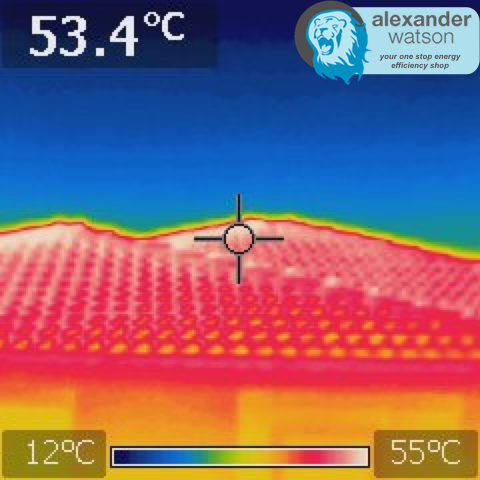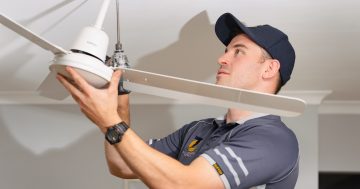
Sci-fi fans might confuse it with a scene from Predator however conducting a thermal imaging analysis of your home is one of Alexander Watson’s top 7 tips for staying cool this Summer. Read on to find out how you can book a free thermal imaging analysis of your home during January…
Here’s Alexander Watson’s top 7 tips for keeping your home cool this summer…
- 1. Seal up gaps around windows, doors, exhaust fans and downlights. Stopping air leakage in summer keeps the warm air out for longer and helps refrigerated air conditioners work more effectively.
2. Shut your home up during the day and open it up at night to flush out the heat. Unless you have evaporative cooling, remember to turn off your air conditioner once you start opening windows and doors.
3. Make sure you have adequate ceiling and wall insulation without ANY gaps. Canberra homes should have R5 ceiling and at least R2 wall insulation. Remember a 5% gap gives a 50% reduction in insulation performance!
4. Arrange a thermal imaging analysis to identify exactly where heat is entering your home. Thermal imaging will pick up gaps in insulation, windows and any other areas that radiate excess heat.
5. Use shade sails and external blinds wherever possible. Stopping the heat before it enters your home is much more effective that trying to deal with it once it has entered your home.
6. Install roof ventilators to get rid of the hot air in your roof and take the pressure off your insulation. The cooler you can get your roof space the cooler your home will be.
7. Use your air conditioning earlier in the day if possible. Air conditioners use excessive amounts of energy trying to cool hot homes. Its much more efficient to give the AC a blast before it gets too hot then turn it off and keep the house closed up to keep the cool air in.
Alexander Watson specialises in energy efficiency audits and upgrades for existing buildings. They’re also locally owned and operated.
This month only, Alexander Watson are offering free home energy assessments with thermal imaging (normally valued at $99).
Thermal imaging cameras seek out hot spots caused by missing insulation and air leakage behind your home’s walls, ceilings, ducts and plumbing. This causes your home to leak heat while you waste money and energy on more heating and cooling.
The camera can also be used for post-building insulation checks on new homes during the defect liability period.
Contact Alexander Watson on 6100 3645 to book a free home energy assessment with thermal imaging analysis today.





















